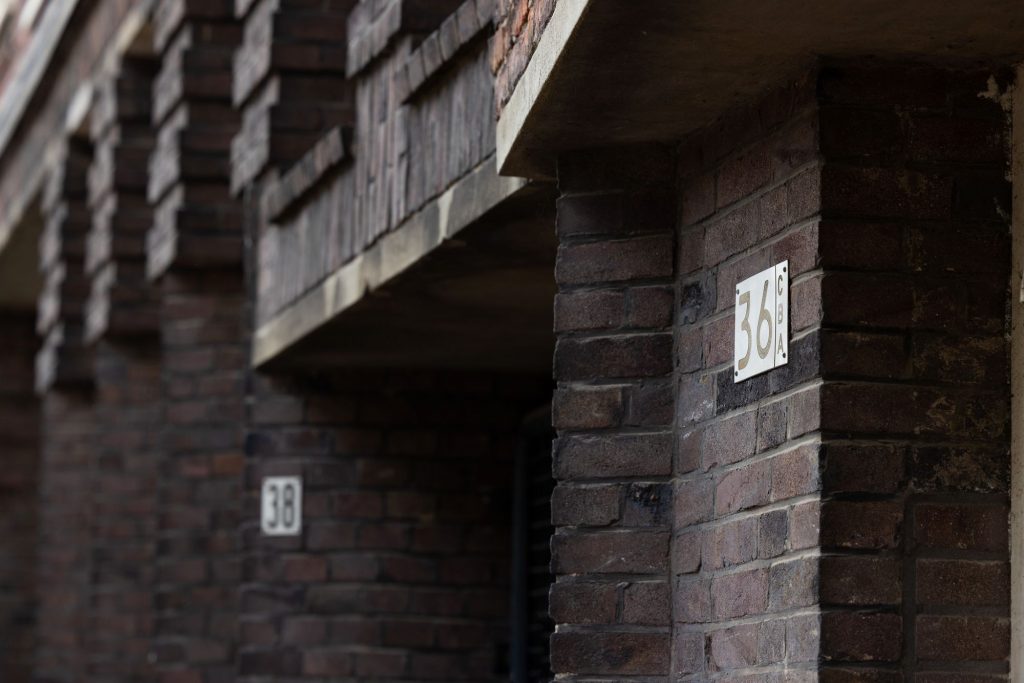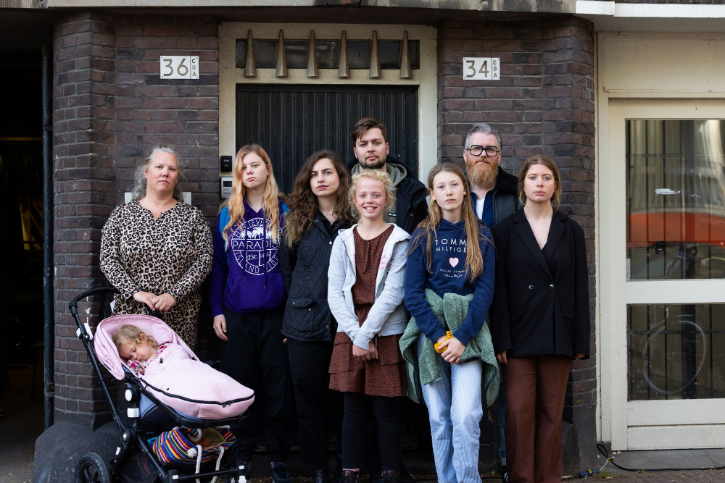Van Ereveld Vol Leven naar Documentaire “Straat Vol Leven”
Ontdek de ontroerende documentaire “Straat Vol Leven”, die start op 3 mei om 21.00 uur op AT5. Herhaling op 4 mei op AT5, tevens beschikbaar op Videoland vanaf 4 mei. Voor nachtbrakers: mis het niet op RTL4, uitgezonden om 23.55 uur op 4 mei.
Bekijk hier de promoSTRAAT VOL LEVEN
Op 4 mei 2022 werd de allereerste “Straat Vol Leven” herdenking gehouden aan de Nieuwe Uilenburgerstraat 34 – 36 in Amsterdam. Deze bijzondere herdenking werd mogelijk gemaakt door de inzet van veertig representanten, die de weggevoerde voormalige bewoners uit de Tweede Wereldoorlog vertegenwoordigden, en met behulp van enthousiaste vrijwilligers.
De Herdenking
Acteurs Saskia Temmink en Thomas de Bres deelden verhalen over de buurt en zijn bewoners voorafgaand aan de oorlog. Ze introduceerden de families van Nieuwe Uilenburgerstraat 34 – 36. Voor elke familie stapten representanten naar voren die qua leeftijd en geslacht overeenkwamen met de bewoners die zijn weggevoerd, waardoor een levend beeld van de familie ontstond.
Na het voorstellen van elke familie, deelden Saskia en Thomas meer over hun levens, hun beroepen, en waar de kinderen naar school gingen. De herdenking sloot af met een emotioneel moment waarbij saxofonist Cees Ten Dam een prachtig stuk speelde, gevolgd door het voorlezen van de namen van de omgekomen bewoners door Thomas.
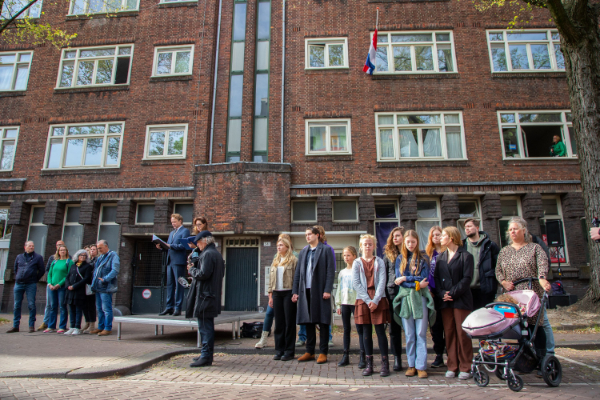
Documentaire “Straat Vol Leven”
Deze indrukwekkende herdenking is vastgelegd in een gelijknamige documentaire. Nathalie Toisuta, de initiatiefneemster en regisseur, en acteur Hans Dagelet lichten toe waarom deze herdenking zo belangrijk is. Onderzoekers Stijn Reurs en Saskia Temmink delen persoonlijke verhalen die zij tijdens hun onderzoek hebben ontdekt.
Bekijk de Documentaire
“Straat Vol Leven” wordt op 3 & 4 mei om 21.00 uur uitgezonden bij AT5 en is vanaf 4 mei ook beschikbaar op Videoland. Voor nachtbrakers zendt RTL4 de documentaire uit op 4 mei om 23.55 uur.
Ondersteuning en Toekomstplannen
Deze herdenking is mogelijk gemaakt dankzij de financiële steun van Job Cohen, 4en5 Mei Amsterdam, vfonds, en het Cultuurfonds. We zijn hen zeer erkentelijk voor hun steun.
Voor toekomstige herdenkingen zoeken we zowel vrijwilligers als financiële steun.
Mocht u willen helpen, neem dan contact op via: Nathalie@medialuna.nl.
Bekijk documentaire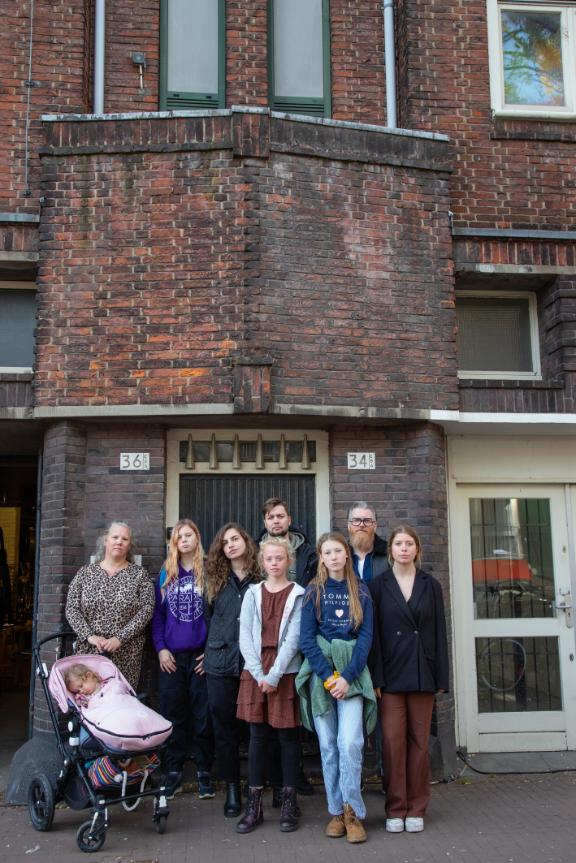
Credits
Veel dank aan alle mentoren en leermeesters die door de tijd heen, ieder op hun unieke wijze, hebben bijgedragen aan het koesteren en inspireren van het principe ‘Herdenken Vol Leven’. ‘Straat Vol Leven’ is een van de indrukwekkende manifestaties van deze traditie.
Wij zijn diep dankbaar voor alle vrijwilligers die hun tijd en energie hebben ingezet om ‘Straat Vol Leven’ mogelijk te maken. Onze dank gaat ook uit naar alle representanten die eer hebben betoond aan de weggevoerde personen van de adressen Nieuwe Uilenburgerstraat 34 en 36 in Amsterdam
Met dank aan:
Altan Erdogan – AT5
Ellen Meijerse – RTL4
Ed Leatemia – fotografie Struikelstenen
Wij betuigen onze oprechte dank aan de volgende organisaties die ervoor zorgen dat de beelden van de Tweede Wereldoorlog en de Holocaust bewaard blijven en toegankelijk zijn. Dankzij hun inzet kunnen wij deze belangrijke geschiedenis blijven vertellen. Onze dankbaarheid is enorm.
Beeld Bronnen:
Anne Frank Stichting
BEELDBANK WO 2
Holocaust Educatie
Joods Cultureel Kwartier
Joods Monument
Jonet.nl
Kamp Westerbork
NIOD
Netwerk Oorlogsbronnen
Tweede Wereldoorlog.nl
Presentatie:
Hans Dagelet
Vertellers tijdens de herdenking:
Thomas de Bres
Saskia Temmink
Research:
Stijn Reurs
Saskia Temmink
Productie:
Heidy van Koesveld
Regie en Montage:
Jurjen Nieuwenhuizen
Camera:
Oscar Pasveer
John Lanser
Daphne Chlimintzas
Gimbal Operator:
Steven van Hensbergen
In opdracht van AT5 uitgevoerd door Media Luna Tell A Story.

Je kunt ook het verslag lezen van journalist Yvette Bax.
Zij was erbij op 4 mei 2022
“Ontroerend, heftig, en ongelooflijk indringend”. Zo wordt de herdenking Een Straat vol Leven door zowel toeschouwers als participanten omschreven. Een unieke herdenking, waarbij de oorlogsslachtoffers weer tot leven worden gewekt, en niet alleen een verhaal, maar ook een gezicht in het nu krijgen.
Om 17:00 uur is het dan zover
Voormalig burgemeester Job Cohen presenteert vol trots een totaal vernieuwende 4 mei herdenking, genaamd: Een Straat vol Leven.
In de Nieuwe Uilenburgerstraat, in het hart van de voormalige Jodenbuurt. De straat is gevuld. Er staat een podium klaar om betreden te worden, saxofonist Kees ten Dam heeft net zijn laatste sound check gedaan, voorbijrijdende auto’s en fietsers houden halt, en buurtbewoners hangen uit hun raam om gade te slaan wat er beneden gebeurt.
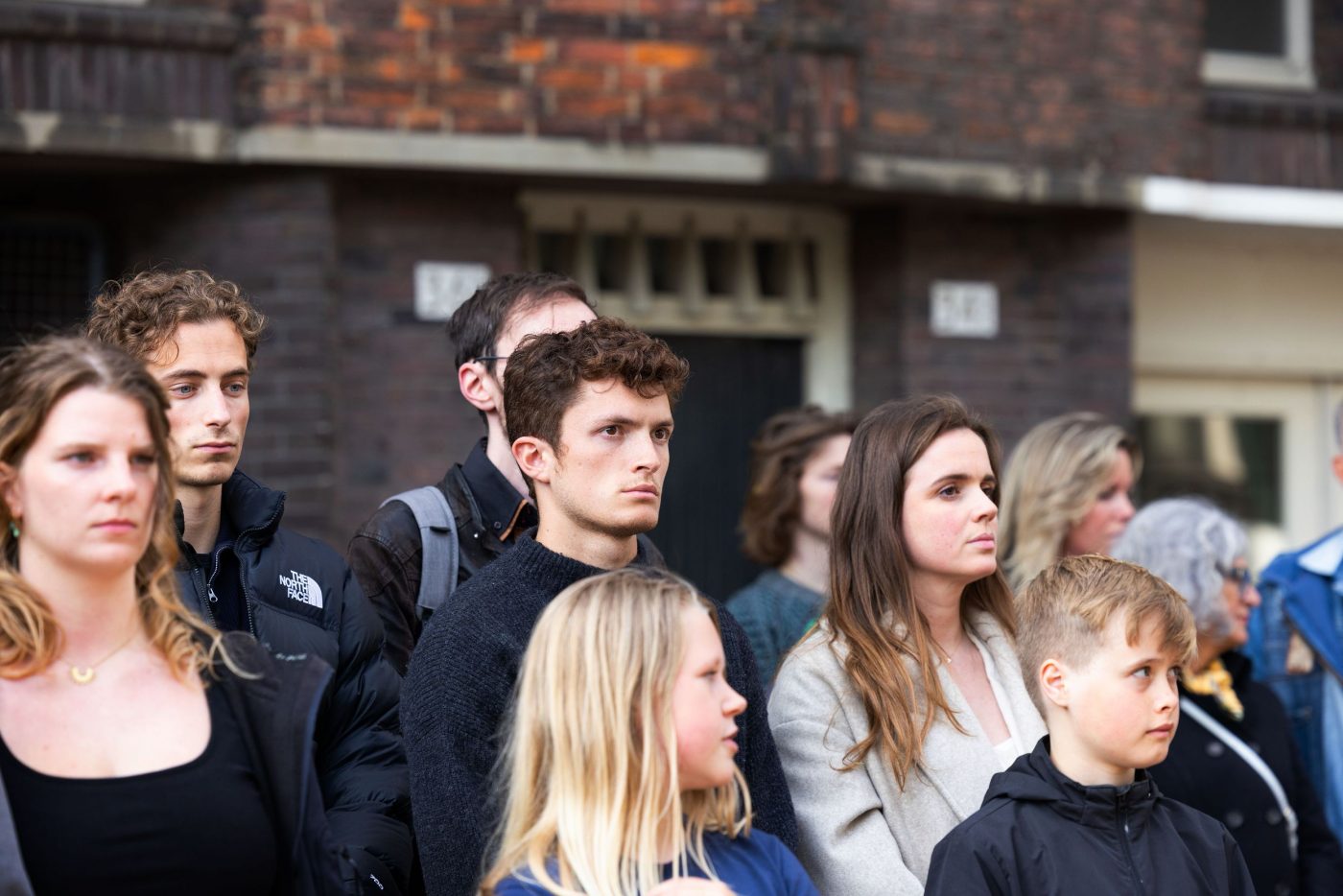
374 mensen zijn in de Tweede Wereldoorlog uit deze éne straat gedeporteerd. Driehonderdvierenzeventig. En dat is nog maar uit één straat. In totaal zijn er 60.000 mensen uit hun huis gehaald de plek waar zij zich veilig en beschermd waanden. Om nooit meer terug te keren. Maar vandaag wordt een aantal van die verdwenen mensen weer zichtbaar gemaakt, voor héél even terug gehaald. Want vandaag worden niet alleen de verhalen verteld van de bewoners van de Nieuwe Uilenburgerstraat nummer 34 en 36, maar worden zij ook in fysieke aanwezigheid vertegenwoordigd door vrijwilligers. Geen zwart wit beelden, of slechts namen op een monument: maar gepresenteerd door echte, levende mensen, van dezelfde leeftijd en hetzelfde geslacht. Waardoor het niet alleen duidelijk, maar ook echt zichtbaar en voelbaar wordt, welke levens er verloren zijn gegaan.

De echte verhalen
Dan klimmen acteurs Saskia Temmink en Thomas de Bres het podium op, en
beginnen te vertellen over de voormalige bewoners van de vier verdiepingen van
de twee panden achter hen. De familie Appelboom woon de hier met z n negenen.
Vader Jacob Appelboom moeder Rachel Brilleman en hun kinderen Isaac, Betje,
Rebecca, Hartog, Sara, Aaltje en Sientje Waarop er negen mensen, vader,
moeder en kinderen, de straat oversteken om voor het huis te gaan staan. Vele
kindervoetjes waren altijd hoorbaar in het trappenhuis, naar 3 hoog.
Over alle bewoners wordt verteld wie ze zijn en wat ze deden, er wordt een echt
inkijkje gegeven in hun leven. Niet het leven als oorlogsslachtoffer, maar in hun
leven van daarvóór. Toen zij nog vol verwachting, vol hoop en dromen, in het leven
stonden. Dan wordt verteld hoe de familie werd opgepakt, en hun huis werd
leeggeroofd in opdracht van de ERR: een organisatie die inboedels naar Duitsland
transporteerde. Vervolgens wordt de inboedel lijst van de familie Appelboom
voorgelezen, alle items die uit hun huis gehaald werden. Kasten, ledikanten,
kinderbedjes. Alle informatie die over de bewoners wordt voorgelezen is echt,
afkomstig uit archieven. Waarop Saskia afsluit met: De gehele familie Appelboom
wordt in 1942 en 1943 vermoord, niemand van hen overleeft
Wanneer alle verhalen over de in totaal veertig bewoners van de panden verteld
zijn, lopen allen die de oorlog niet overleefd hebben één voor één, afgeroepen op
naam weg. En kunnen alle aanwezigen zien hoeveel bewoners er nog blijven
staan, degenen die het met heel veel geluk overleefd hebben: welgeteld vijf.
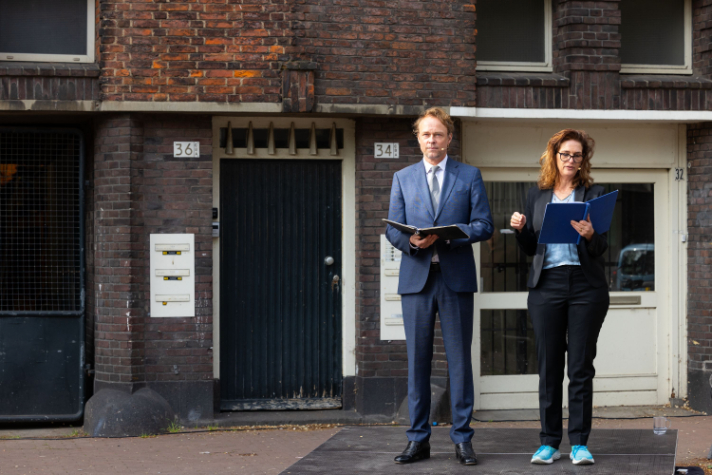
Verdriet, tranen en woede
Tranen vloeien. Zowel bij omstanders, als bij de deelnemende
vertegenwoordigende vrijwilligers. Een van hen is Eva ( Eva is een van de
huidige bewoners van nummer 36, en representeerde de 51 jarige Sarah Pots, die
in haar huis woonde samen met haar man Bernard en hun zes kinderen. Eva: Ik
vond het schitterend, maar ook ontzettend heftig om dit te doen. Toen ik in 2011 in
deze straat kwam wonen wist ik al dat er in deze buurt heel veel Joden
gedeporteerd waren tijdens de oorlog. Er liggen hier ook over al gedenkstenen in de
straat. Maar ik had geen idee wie die mensen waren. Toen ik erachter kwam dat er
in mijn huis een vrouw woonde van precies mijn leeftijd, die met haar hele familie is
afgevoerd en het niet heeft overleefd, kwam dat ongelooflijk hard binnen. Ineens
was het niet meer abstract, maar hoorde ik van alles over deze vrouw en haar
familie. Ik probeer me voor te stellen hoe ze met zijn allen geleefd hebben in het
huis waar ik nu in leef. Het raakt me allemaal enorm. Ook omdat het nog helemaal
niet zo lang geleden is. En er nog steeds zoveel racisme en antisemitisme in de
wereld is. Daar maak ik me ook kwaad over: dat het nog steeds bestaat. Dus ik
moest even ontzettend hard huilen. Maar dat mag op een dag als deze, toch?
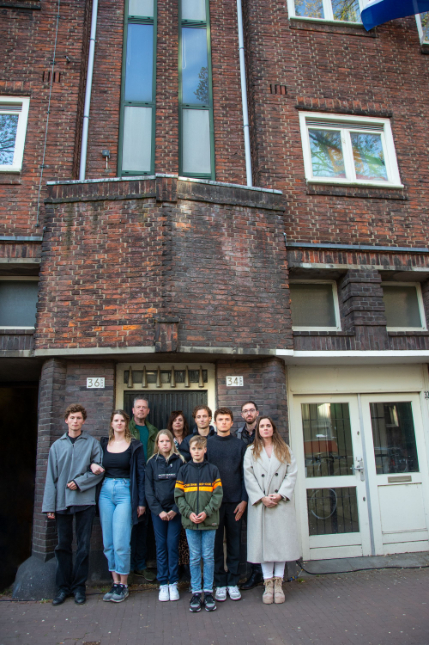
Een andere betraande deelnemer is Fred ( die hier samen met zijn dochter Terry ( en kleindochter Joy ( is. Mijn moeder zat tijdens de oorlog in het Verzet vertelt hij. Dat heeft altijd veel indruk op me gemaakt. Daarom vond ik het een mooie gelegenheid om hier aan mee te doen: als een eerbetoon aan haar, en aan alle oorlogsslachtoffers. Ik vind het zo mooi hoe deze herdenking vormgegeven is. Door het zo te laten zien, komt het echt tot leven. Zowel de mensen als hun verhalen. En dan die saxofoon muziek erbij, nou, echt kippenvel hoor.

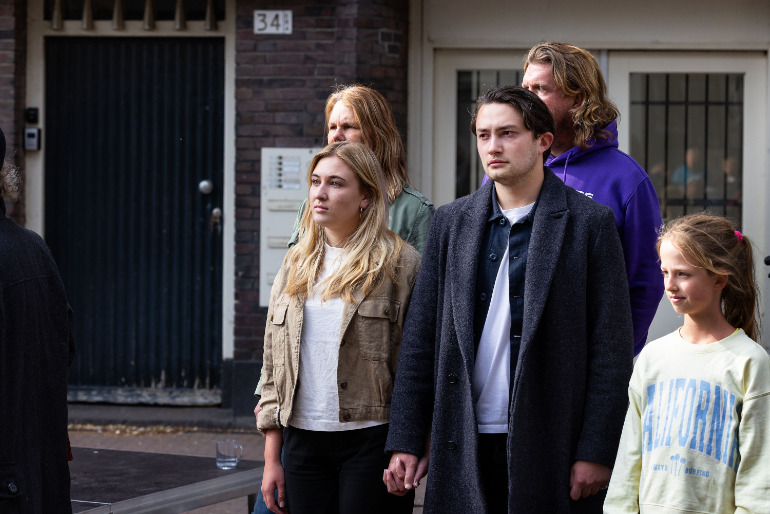
Dochter Terry staat er knikkend naast. Ja, ik vond het ook heel bijzonder. Om hier
bij te mogen zijn, en om samen met mijn vader en dochter representant te zijn. Wat
zelf bij mij vol binnen kwam, is dat ik aan het einde wegliep, terwijl mijn vader en
dochter bleven staan. Toen drong het pas echt tot me door dat al die families totaal
verscheurd zijn, uit elkaar gehaald, meestal zonder van elkaars lot te weten. Ook
was er echt contact met het publiek: ik zag mensen huilen, we voelden en zagen de
emoties van de toeschouwers.
(Klein)dochter Joy vond het ook een bijzondere ervaring. Ze deed mee om het
goede voorbeeld te geven, zegt ze trots glunderend. Ik heb op school geleerd dat
er in de Tweede Wereldoorlog verschrikkelijke dingen zijn gebeurd. Dat Joden
zomaar om niks op gepakt werden, en in concentratiekampen gegooid en
doodgeschoten. Dus ik vind dat iedereen hen respect zou moeten betonen. Ook
kinderen. Dus hiermee wil ik laten zien dat kinderen van mijn leeftijd daar ook aan
bij kunnen dragen.
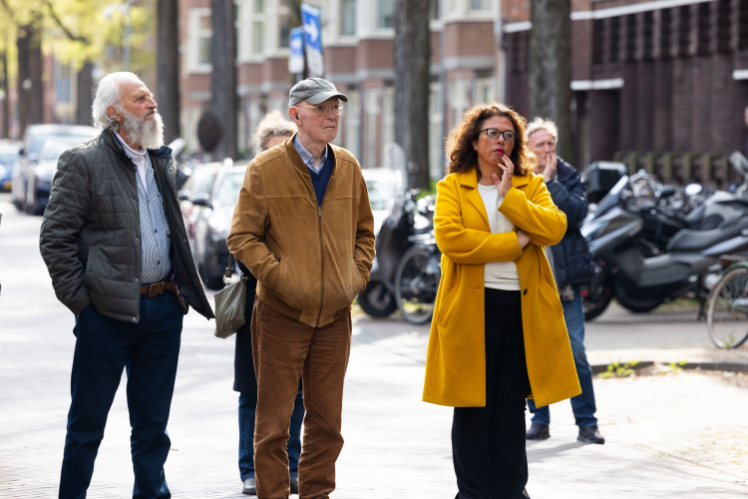
Een Europa vol Leven
Na een korte stilte, brengt Kees ten Dam zijn saxofoon nog even prachtig ten
gehore. De klanken stijgen op tussen de panden, tot ze verdampen in de lucht.
Waarop bedenkster en initiatiefneemster van de herdenking, Nathalie Toisuta, deze
bijzondere middag afsluit.
Ze is content, haar ogen twinkelen. We zijn héél lang bezig geweest met de
voorbereiding hiervoor vertelt ze. Twee jaar, om precies te zijn. Zo lang heeft het
geduurd voordat er genoeg animo en steun was, en we via fondsen eindelijk het
geld ervoor bij elkaar hadden. Ik had geen idee hoeveel impact het al dan niet zou
hebben, maar het heeft al mijn verwachtingen overtroffen. Ik zag kleine kinderen
weglopen. Mijn beide zoons, die ook meededen aan de opstelling, weglopen. Dat is
toch niet te geloven? Dat doet iets met je Om het werkelijk te aanschouwen, en
ook de verbondenheid te zien tussen de mensen en families die daar stonden. We
gaan voorbij de grenzen van leven en dood. Dat is wat ik wilde, wat ik voor ogen
had: de mensen eren zoals ze waren als mens. Niet als oorlogsslachtoffer of als
dode. Want je kunt je identificeren met iemand die leeft niet met iemand die dood
is. Want de doden zijn al weg. Dus dit brengt het veel meer dichterbij, maakt het
echter, en dat heeft veel meer impact.
Of er volgend jaar weer Een Straat vol Leven komt, daar heeft Nathalie een
resoluut antwoord op: Zeer zeker! Om daaraan toe te voegen: En dan zijn het
hopelijk meerdere straten. Wie weet doet het jaar daarop wel heel Amsterdam mee.
En daarna heel Nederland! Mijn wens: dat we in heel Europa zo onze slachtoffers
gaan herdenken. Zou dat niet ontzettend mooi zijn?


